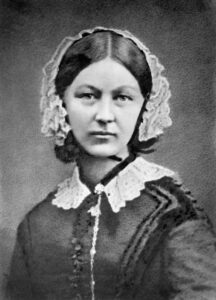Unearthing 11 Hidden Heroines of Science: The Misinterpreted Pioneers
In the annals of scientific history, we often hear about the giants of discovery—names like Galileo, Newton, and Einstein echo through the ages. Yet, there are remarkable women hidden in history who, despite the odds stacked against them, left an indelible mark on the world of science. Let’s unveil their inspiring stories, narratives often overshadowed by gender biases of their times.
1. Maria Mitchell

Maria Mitchell, born in 1818, was a groundbreaking American astronomer, known for discovering “Miss Mitchell’s Comet” in 1847, making her the first female astronomer in the United States. Despite her remarkable achievements, Mitchell’s work was often overlooked due to her gender. She later became a professor at Vassar College, demanding equal pay as her male counterparts. An advocate for women’s rights and education, she co-founded the Association for the Advancement of Women and continued her astronomical observations. Mitchell’s legacy lives on, with honors such as lunar craters and observatories named in her honor, recognizing her pioneering contributions to science and gender equality.
2. Rosalind Franklin

Rosalind Franklin, born in 1920, made pioneering contributions to the discovery of the DNA double helix structure. Her work in X-ray crystallography led to the famous “Photo 51,” a key piece of evidence. However, Franklin’s contributions were largely overshadowed. A combination of factors, including gender bias, disputes with colleagues, and a lack of acknowledgment, left her without proper recognition during her lifetime. She was excluded from receiving the Nobel Prize, which ultimately went to others who had access to her work. Franklin’s story highlights the barriers women in science faced in the mid-20th century, despite their significant contributions.
3. Harriet Brooks

Harriet Brooks Pitcher, a brilliant physicist born in 1876, played a pivotal role in nuclear science. She co-discovered radon, proving elements can transform, and unveiled the concept of radioactive decay chains for dating ancient materials. Despite her groundbreaking work, Brooks faced gender barriers and societal norms. She had to choose between marriage and her career, ultimately leaving science to raise a family. Her contributions were overshadowed, and recognition came decades later. Nevertheless, her pioneering works and discoveries laid the foundation for nuclear physics and radiation monitoring.
4. Lise Meitner

Lise Meitner, born in 1878 in Vienna, played a crucial role in the discovery of nuclear fission, a foundational concept for atomic weapons and energy. Her collaboration with Otto Hahn spanned over 30 years, but her recognition was marred by a trifecta of sexism, politics, and her Jewish heritage. After fleeing Nazi-occupied Austria in 1938, Meitner continued her work with Hahn from Sweden. Although she and her nephew Otto Frisch formulated the theory of nuclear fission, Hahn published it without her as co-author. Gender bias and anti-Semitism led to her exclusion from the Nobel Prize. Today, Meitner remains a lesser known but vital figure in nuclear physics.
5. Sophie Germain

Sophie Germain, a brilliant 19th-century French mathematician, faced immense challenges due to her gender. Born in 1776, she defied societal norms by pursuing mathematics, despite her family’s initial resistance. She adopted the pseudonym “M. Le Blanc” to access educational materials from the École Polytechnique, eventually revealing her true identity to mathematician Joseph-Louis Lagrange. Germain made significant contributions to number theory and even worked on Fermat’s Last Theorem. However, her groundbreaking work went largely unrecognized in her time, as she was isolated from the academic community due to her gender. Only centuries later did her remarkable achievements gain the recognition they deserved.
6. Nettie Stevens

Nettie Stevens, born in 1861, made groundbreaking contributions to genetics by discovering that an organism’s sex is determined by specific chromosomes. Her research, conducted on mealworms, revealed that males produced reproductive cells with both X and Y chromosomes, while females produced cells with only X chromosomes. This pivotal finding challenged prevailing beliefs that sex was influenced by environmental factors or maternal inheritance. Despite her pioneering work, Stevens faced gender bias in the scientific community, and credit for her discovery was often attributed to her male contemporaries. Her legacy highlights the historical neglect of female scientists and their vital contributions to science.
7. Ruth Benerito

Ruth Benerito, a pioneering American chemist, played a crucial role in revolutionizing the textile industry with her invention of wrinkle-resistant, stain-free, and flame-resistant cotton fabrics. Her groundbreaking work helped revive the struggling cotton industry in post-WWII America. She faced challenges because she was a woman in a time when women weren’t always recognized for their contributions to science. Despite this, she held many patents and made significant contributions to textiles. She also promoted education. Her achievements show that women can excel in science and inspire others to do the same.
8. Esther Lederberg

Esther Lederberg, a pioneering microbiologist, made significant contributions to the field of genetics. Her groundbreaking work included the 1951 discovery of the lambda bacteriophage virus and the development of replica plating, a vital technique still used in scientific research today. Despite her remarkable achievements, she often did not receive the recognition she deserved. However, her significant contributions were often overlooked, and when her husband, Joshua, received a Nobel Prize in 1958, her integral role was not properly recognized. Esther Lederberg’s story shows how women in science faced unfair treatment in the past.
9.Nina Byers

Nina Byers, born in 1930, was a prominent theoretical physicist, who made remarkable contributions during her career, particularly in particle physics and superconductivity. Her groundbreaking work at Stanford University revealed significant insights into the weak interaction and the behavior of neutrinos. Despite her pivotal role in advancing physics, recognition often eluded her. She was the sole female professor in her department for two decades, highlighting the gender disparities prevalent in her time. Nina’s perseverance and dedication to her field paved the way for women in science. In her retirement, she tirelessly documented the achievements of women in physics, shedding light on their often-underappreciated work.
10. Gerty Cori

Gerty Cori, an accomplished scientist, and her husband Carl Cori were pioneers in biochemistry, uncovering the Cori cycle, a fundamental process in sugar metabolism. Her significant contributions often faced discrimination due to her gender. Despite being equally involved, Gerty struggled for recognition throughout her career. It took 16 years and a Nobel Prize in 1947 for her to finally achieve the rank of professor. Even in her final years, battling an incurable illness, Gerty remained dedicated to research. Her story highlights the gender bias that has historically deprived women of the recognition they deserve, emphasizing the importance of acknowledging and celebrating the contributions of women in science.
11.Cecilia Payne-Gaposchkin

Cecilia Payne-Gaposchkin, an outstanding astrophysicist, made a groundbreaking revelation about the composition of stars, yet her immense contribution went unrecognized in her era due to prevailing gender biases. In the early 1920s, she discovered that stars primarily consisted of hydrogen, challenging the prevailing notion that they resembled Earth in composition. Unfortunately, her remarkable findings faced skepticism and were initially dismissed. Payne-Gaposchkin confronted further hurdles in her academic career, enduring a lack of recognition and support. Despite these challenges, her determination and pioneering work laid the foundation for our modern understanding of the universe. She remains an inspiration for breaking gender barriers in science.
These are just a glimpse into the remarkable journeys of women who defied conventions, broke through barriers, and added unique hues to the canvas of scientific progress. While these stories are awe-inspiring, they are only a fraction of the countless narratives waiting to be uncovered. In a world where men often claim the spotlight, these women remind us that science knows no gender boundaries. Their stories beckon us to explore the hidden legacies of many more unsung heroines of science.


/shethepeople/media/media_files/QW5X15ZIvugtdtfkAHEQ.png)




